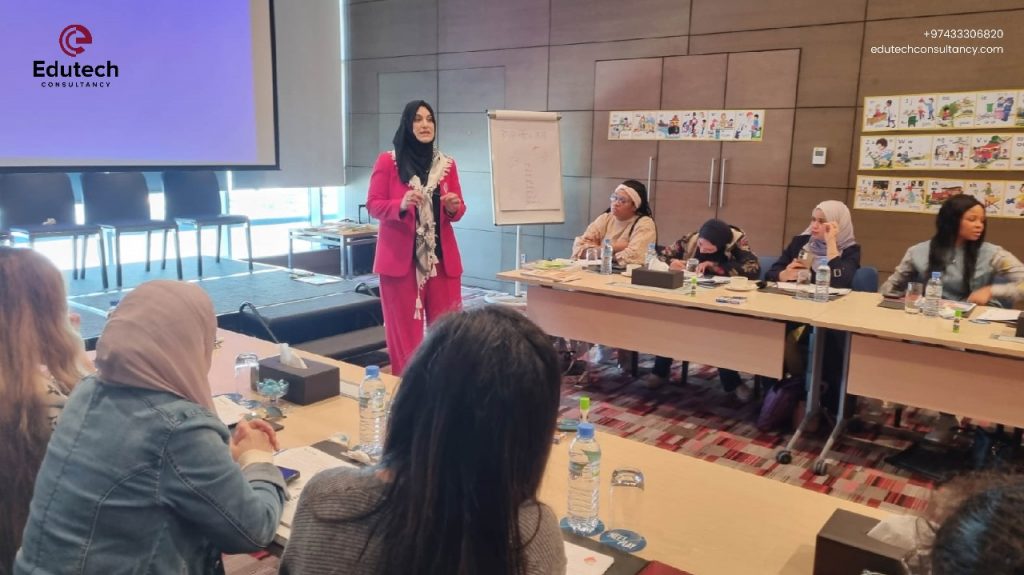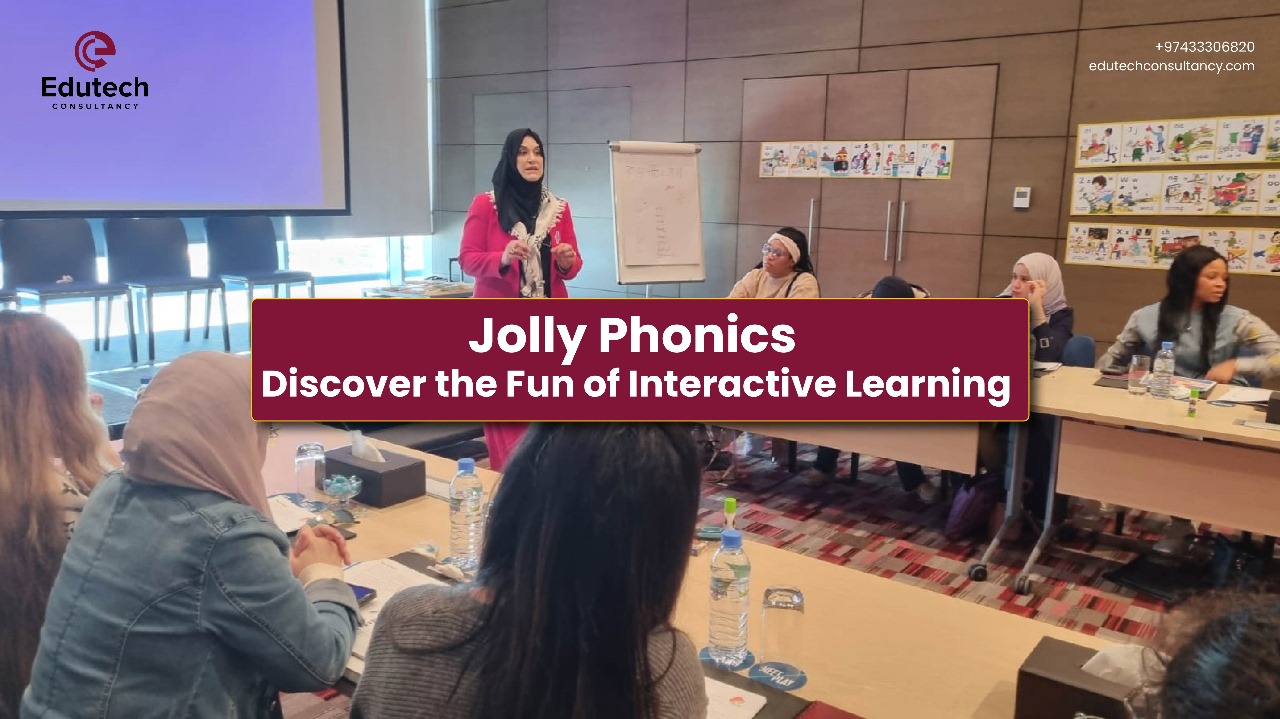Imagine students learning to read and starting to understand the journey of language literacy in their early years. The foundations of language in early years seem important to build. But alongside, it’s often overwhelming for students to recognize the sounds and retain the knowledge learnt for longer. That’s where Jolly Phonics comes in!
Today, we are sharing this engaging program, Jolly Phonics. An enjoyable and interactive approach to teaching children the essential sounds of the English language. That helps them become confident in reading and writing.
About Jolly Phonics
Jolly Phonics is known as a systemic and synthetic Phonics learning program, which means it breaks down words into individual sounds known as phonemes. Unlike the other methods, it utilizes a multi-sensory approach.
The letter sounds are taught first, and then the sights of the same letters are used to help children recognize the formation of letters. In addition, the letter tracing is used through fingers and other resources. Therefore we can say that the Jolly Phonics uses the child’s visual, auditory and physical senses to make them learn letters effectively.
The 26 letters of English are taught differently than the regular ABC. Instead, they are incorporated with all their 42 letter sounds. Therefore, Jolly Phonics teaches these 42 letters through sounds, actions, tracing, jigsaws, sing-along songs, and stories.
The five essential skills of Jolly Phonics:
The Jolly Phonics program incorporates the five basic skills of learning:
- Letter Sounds: Letter sounds the most crucial step in teaching Jolly Phonics. As we already stated, Jolly Phonics is beyond the traditional letter teaching. The letter sounds are taught to students in a way that helps them learn how to connect the sounds to each letter.
- Letter Formation: This next step includes teaching the students proper writing of the letters. This serves multiple purposes. Firstly, it includes writing practice in both upper and lowercase. Secondly, this step helps improve the writing speed of students with proper readability of the letters.
- Blending: When students become familiar with the sounds and letter shapes, the next step is blending. This step helps them blend letters to form words. Furthermore, the blending step helps students decode unfamiliar written words easily and fluently.
- Segmenting: This step is the opposite of blending. Whereas in blending, students learn to join letters together. In segmenting, students learn to break down words into individual sounds. This step aids in learning spellings and sounding out new words quickly.
- Tricky Words: Tricky words, as the name implies, are a little tricky. As they don’t follow the typical rules of Phonics. These are also known as sight words and are taught as a whole unit.
Teachers can easily make a strong base for fluent reading and writing in their students using these five foundational skills.
What makes Jolly Phonics fun and engaging?
The details mentioned above are all about the basics of Jolly Phonics, but what is unique that sets this program apart from other Phonics methods?
The interactive and fun steps used in the teaching of this program make it super lively and exciting for students to get involved in the learning process deeply and help retain the learned information longer.
Here are some fun steps used in Jolly Phonics teaching to make it exciting for the students, with improved outcomes in the learning process.
- Sing-along songs: This step involves catchy tunes that make learning letter sounds fun and memorable. Children can easily remember as they associate a sound with a specific action.
- Actions and movement: Actions and movements help children learn and remember the sounds associated with each letter or letter combination. The actions taught are part of a multi-sensory approach to teaching phonics, which engages the senses (visual, auditory, and kinesthetic) to enhance learning for them. For the letter S, Children pretend to be a snake and make a hissing sound, and for the letter A, Children pretend to hold an apple and take a bite while saying the /a/ sound and so on.
- Colorful visuals: Jolly Phonics uses vibrant, colorful pictures and flashcards to teach each sound. This visual aid helps to retain the learnt lessons better and for longer
- Interactive games and activities: Jolly Phonics uses various resources like magnetic letters to incorporate a hands-on interactive learning experience for children.
Conclusion
As you see, while Phonics teaching is made easy by various methods of Phonics, Jolly Phonics stands out as refreshing and different. As it utilizes the synthetic approach, which is the most effective approach of all.
If you want your little learners to learn the foundations of the English language in the most effective way then there is no option better than the Jolly method. The same way the kids learn vocabulary in a fun and interactive way.
Furthermore, Edutech Consultancy also offers the Jolly Phonics training to everyone linked with teaching Early Years through their workshop. If you are looking to become a Jolly Phonics Teacher or want to incorporate it in your classroom yourself, then you are at the right place!

Contact us today and learn about our upcoming Jolly Phonics Workshop. Here you can learn the magical skills of Jolly Phonics. Get set to sail on a reading adventure with Jolly Phonics, and watch your students’ confidence and love for learning bloom!

